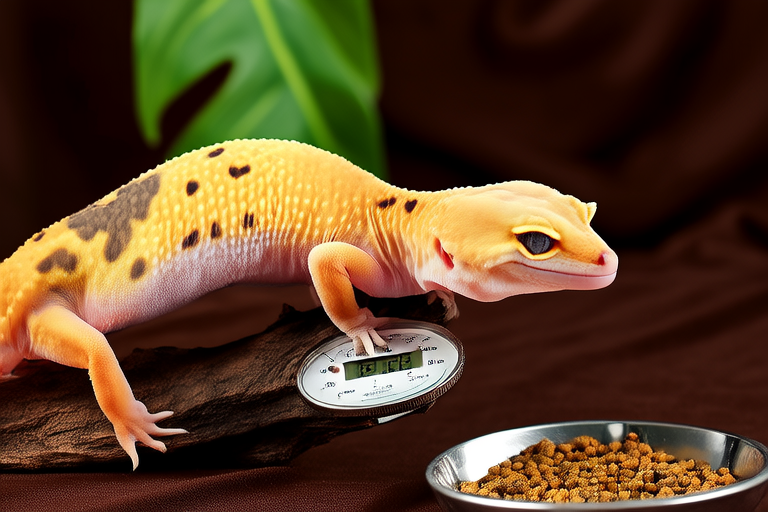How to Make Your Leopard Gecko Super Happy: Expert Tips Revealed
Introduction to Leopard Geckos’ Basic Needs
Welcome to the fascinating world of leopard geckos! These small, nocturnal lizards are popular pets due to their docile nature and relatively low maintenance requirements. To ensure your leopard gecko lives a long and happy life, it’s crucial to understand its basic needs. Leopard geckos require a warm, secure environment with appropriate lighting, temperature, and humidity levels. They also need a balanced diet rich in nutrients.
Detailed Tips on Providing Optimal Habitat
Temperature Control
Leopard geckos thrive in temperatures ranging from 78°F to 90°F (26°C to 32°C) during the day. At night, temperatures can drop slightly but should not fall below 70°F (21°C). A heat mat or under-tank heater placed on one side of the enclosure provides a thermal gradient, allowing your gecko to regulate its body temperature. Always use a thermostat to prevent overheating.
Humidity Levels
Maintaining the right humidity is vital for your gecko’s health. Leopard geckos need a humidity level between 30% and 40%. This can be achieved by misting the enclosure occasionally or placing a humid hide filled with damp moss inside the tank. Avoid over-misting, as excessive moisture can lead to respiratory infections.
Enclosure Setup
Your gecko’s home should mimic its natural environment. Provide plenty of hiding spots using caves, cork bark, or artificial plants. The enclosure should be large enough for your gecko to move around comfortably. A ten-gallon tank is suitable for one adult leopard gecko, but larger enclosures are preferable if you have more than one.
Diet Specifics for Maximum Happiness
A well-balanced diet is key to keeping your leopard gecko happy and healthy. In the wild, they primarily eat insects like crickets, mealworms, and waxworms. In captivity, it’s important to gut-load these insects before feeding them to your gecko. Gut-loading involves feeding the insects a nutritious diet for at least 24 hours before offering them to your pet. Additionally, dust the insects with a calcium supplement to ensure your gecko gets the necessary nutrients.
Feeding Schedule
Adult leopard geckos should be fed every other day, while juveniles may need daily feedings. Offer a variety of prey items to ensure a broad spectrum of nutrients. It’s essential to monitor your gecko’s weight and adjust the feeding schedule accordingly.
Interactive Enrichment Activities
Providing mental stimulation is just as important as physical care. Interactive enrichment activities can help reduce stress and boredom. One simple way to enrich your gecko’s environment is by rearranging the enclosure’s decorations periodically. Introducing new scents, such as herbs or spices, can also stimulate your gecko’s senses. Another idea is to offer different types of substrate, like coconut fiber or paper towels, to encourage exploration.
Handling and Socialization
Leopard geckos are generally calm and easy to handle. However, it’s important to approach them gently and avoid sudden movements. Start by letting your gecko become accustomed to your presence. Once comfortable, you can gradually introduce handling sessions. Remember, each gecko has its own personality, so some may be more receptive to handling than others.
Common Mistakes to Avoid
Even experienced reptile owners can make mistakes. Here are some common pitfalls to watch out for:
- Overheating: Avoid placing the heat source directly above the enclosure, which can cause hotspots and potentially burn your gecko.
- Inadequate Hydration: While leopard geckos get most of their water from their food, it’s still important to provide a shallow water dish that’s easily accessible.
- Improper Lighting: Leopard geckos are nocturnal, so they don’t require UVB lighting. However, a low-wattage red bulb can provide gentle nighttime illumination for your gecko.
Signs Your Leopard Gecko is Happy and Healthy
Observing your gecko regularly will help you identify signs of good health. A happy and healthy leopard gecko typically displays bright eyes, clear skin, and active behavior. Regular shedding without issues is another positive sign. Additionally, your gecko should have a healthy appetite and maintain a steady weight. If you notice any changes in behavior or physical appearance, consult a veterinarian specializing in reptiles.
